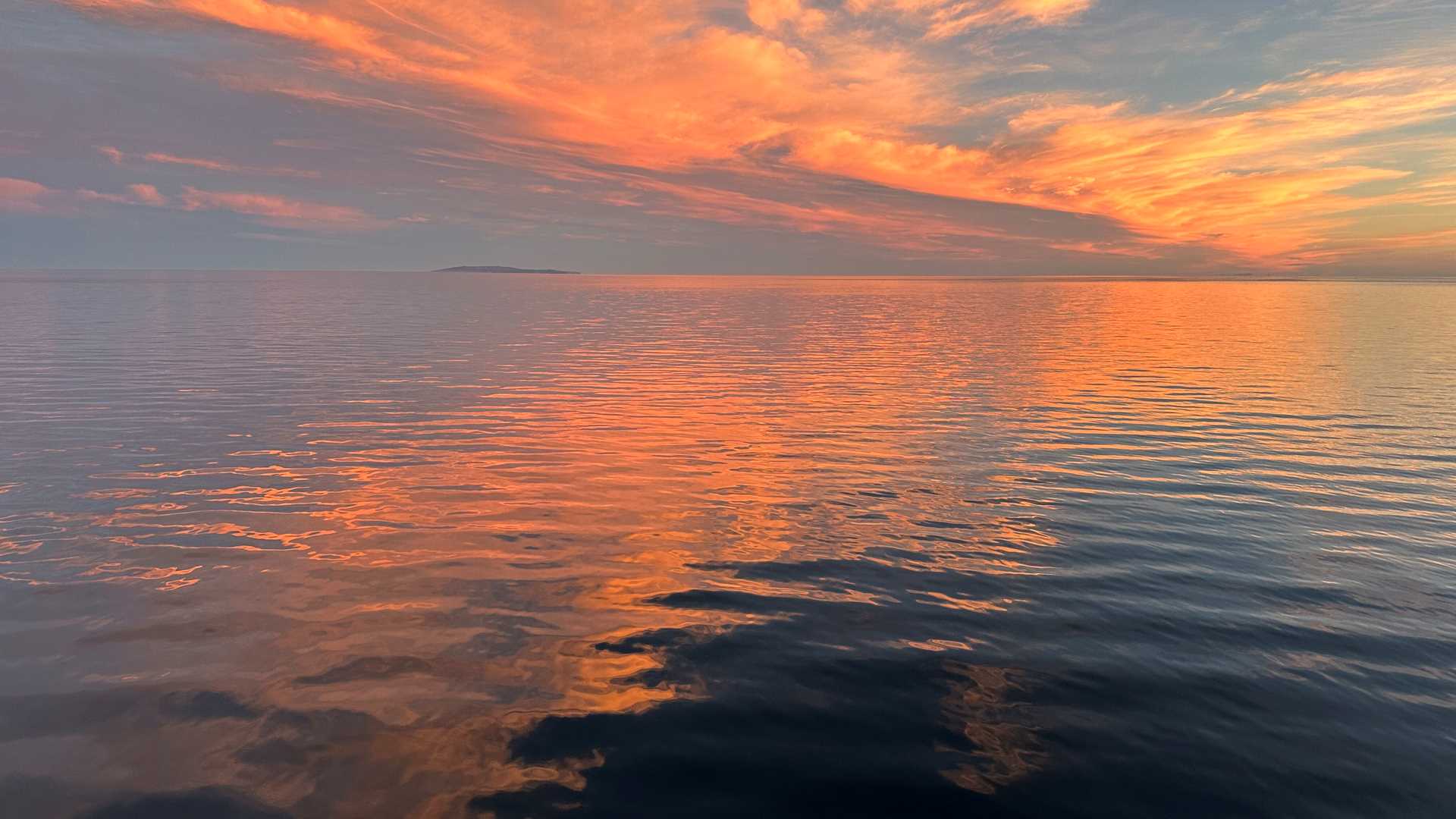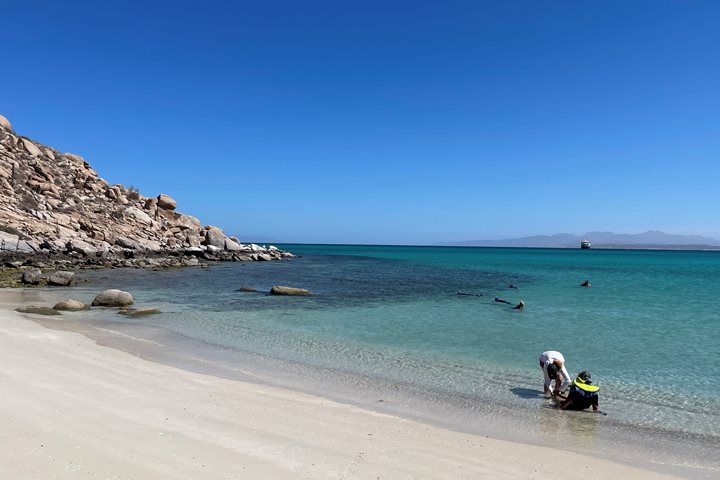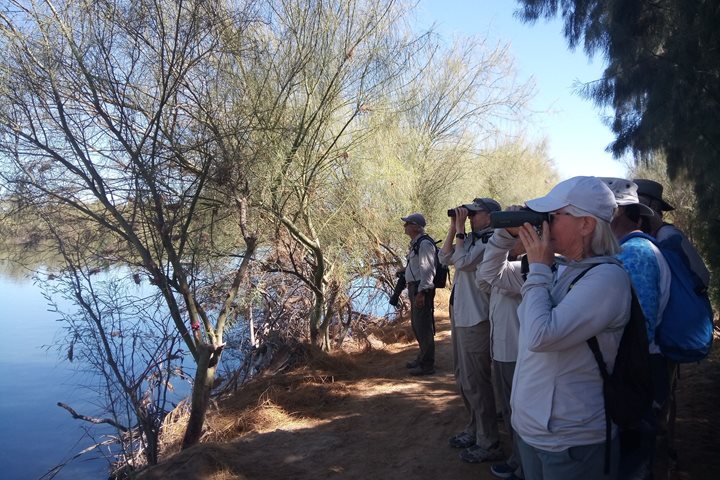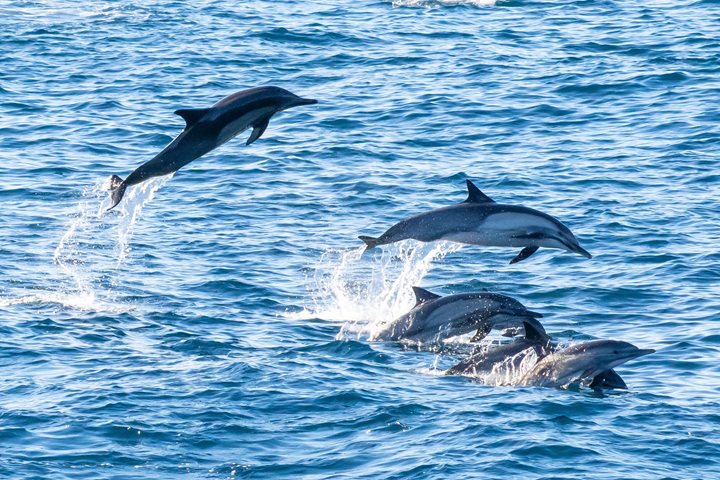The sunrise was spectacular as stretch class was in full swing on the sundeck of National Geographic Venture. Quite a few people also spent time on the bow watching the colors blossoming and looking for wildlife.
Snorkeling equipment was distributed in the morning after the safety briefings about Zodiac, snorkeling, and hiking in Baja briefings. Brian, our NG Certified Photo Instructor, also gave a cell phone photography presentation in the lounge.
After lunch, we enjoyed a Zodiac tour of the volcanic coastline of Isla San Marcos. The stunning geology, interesting flora, and a variety of birds were investigated.







